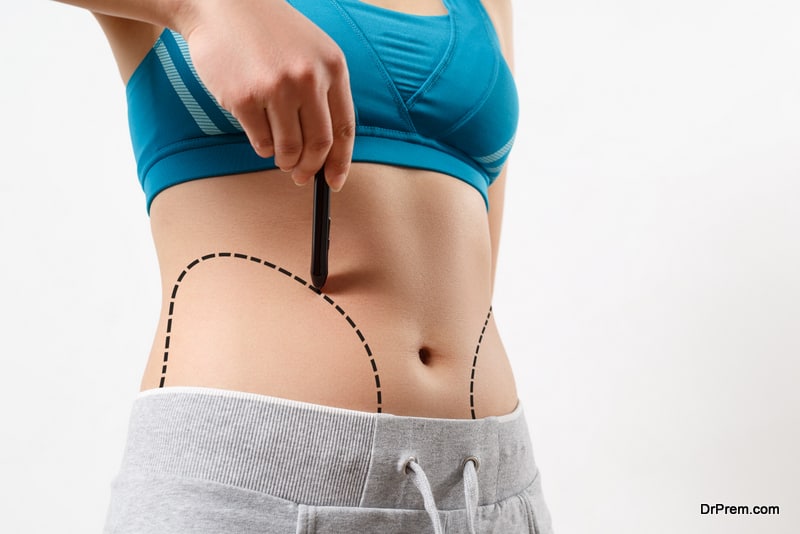Definition:
- Tummy tuck or abdominoplasty is a cosmetic procedure developed to make the abdomen more firm by removing excess skin and fat from the abdominal area. The surgery is usually performed on patients with loose tissues after pregnancy or individuals with sagging after severe weight loss.
- The surgery may often be combined with other surgeries like hysterectomy or with liposuction depending on the needs of the patient.
- Types of surgeries:
- Traditional tummy tuck
- Mini tummy tuck
- Endoscopic tummy tuck
- Extended or circumferential tummy tuck
Details of procedure:
- The tummy tuck surgery is done to improve the appearance of the abdomen. It also helps to relieve skin problems like rashes and infection developed under large flaps of skin.
- The surgery is advised in conditions where:
- Diet and exercise have not improved the tone of abdominal muscles in women who have had multiple pregnancies.
- Loose skin and muscle of abdominal wall causes the abdomen to appear saggy, particularly after extreme weight loss.
- The tummy tuck surgeries is not advisable for:
- Women who wish to have a further pregnancy.
- Individuals who plan to lose a large amount of weight after surgery.
- Patients having a history of previous abdominal surgery.
- Heavy smokers
Facts and Figures:
- The credit for making the first effort to correct excess abdominal skin and fat goes to Dr. Kelly; since then, various surgeries have been designed by different surgeons.
- According to the American Society for Aesthetic Plastic Surgery’s 2008 Cosmetic Surgery National Data Bank, the number of abdominoplasty procedures performed has increased approximately 333% since 1997 and about 150,000 tummy tucks were reported in 2008.
- Tummy tuck is one of the top five cosmetic surgeries performed each year.
Advantages and Disadvantages:
Advantages:
- The major complications associated with tummy tuck are not frequent.
- Long term results; unless the patient puts on significant weight or becomes pregnant the abdomen remains firmer and flatter for many years.
Disadvantages:
- Tummy tuck can’t be used as a method to lose weight
Risks and Complications:
- Damage to internal organs
- Numbness
- Anaesthesia complications
- Bleeding
- Wound infection
- Delayed wound healing
- Skin or fat necrosis (death)
- Blood clots
- Pulmonary embolism
Pre-operative and Post-operative Care:
Pre-operative preparations:
- Consultation with surgeon to obtain a prescription on the necessary medication and advice on medicines you may have to discontinue.
- Inform the surgeon about any allergies related to food, drug or environmental elements as well as smoking and alcohol consumption patterns.
- Medical tourists are advised to select a comfortable hotel room equipped with handicapped facilities that is close to the hospital, for recovery after discharge.
- Physical examination
- Blood and urinalysis
- Arrangements for leave from work, help at home, help with driving, and for post operative recovery period.
- Do not eat or drink anything after midnight the night before surgery.
- Pack a supply of comfortable clothes
Post-operative care:
- After the surgery the abdomen will be wrapped in a support garment. This needs to be worn for 2-3 weeks to ensure proper healing.
- The sutures and drains will be removed within 1 to 2 weeks post surgery.
Do’s, Don’ts and Precautions:
- Do take proper care of incision; keep it dry and clean.
- Do not engage in strenuous activity for 4-8 weeks.
- Avoid showering until surgical drains are removed.
- Do start light activity and movement with 24 to 48 hours.
- Do wear compression garment for 2 weeks.






